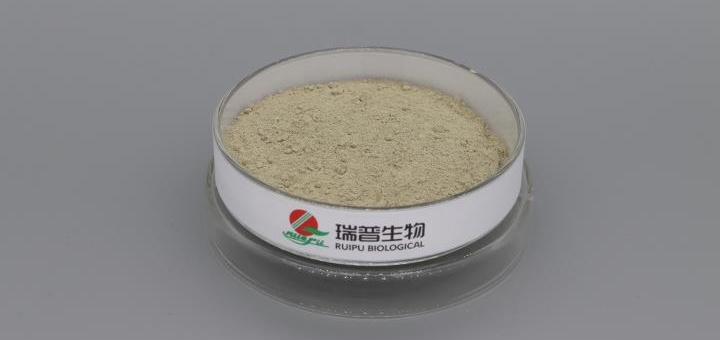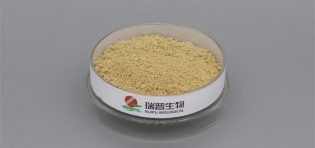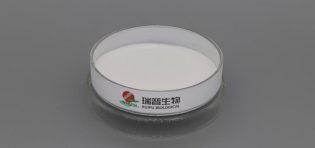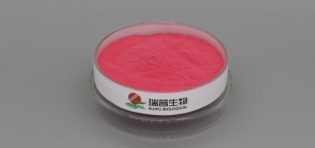
Ferrous gluconate, as a commonly used iron nutritional fortifier in food, is widely applied in the processing of dairy products, baked goods, beverages, etc., due to its advantages such as high bioavailability and minimal impact on food flavor. However, in practical applications, problems such as poor chemical stability and susceptibility to environmental factors pose many technical challenges to food processing. Solutions to these challenges have become the focus of industry research.
I. Main Technical Challenges
Oxidative discoloration: The divalent iron (Fe²⁺) in ferrous gluconate has active chemical properties and is easily oxidized to trivalent iron (Fe³⁺) by oxygen in the air during processing or storage. This not only causes it to lose its iron-supplementing activity but also makes the food appear brown or grayish-black, affecting the product's appearance. For example, adding it to transparent beverages may cause color deepening in a short period; in baked goods such as bread, local discoloration may also occur due to high temperature and contact with oxygen.
Risk of flavor deterioration: Trivalent iron produced by oxidation easily reacts with sulfhydryl compounds in food (such as cysteine in proteins) to generate sulfides with a pungent odor, resulting in a metallic or fishy smell in food and damaging the sensory quality of the product. This flavor deterioration is particularly obvious in high-protein foods (such as milk and yogurt).
Stability highly affected by environmental factors: The stability of ferrous gluconate is highly sensitive to environmental factors such as pH value, temperature, and light. In acidic conditions (e.g., pH < 3), although its solubility is high, the oxidation rate accelerates; in neutral or alkaline environments, it is prone to hydrolysis and precipitation. In addition, high-temperature processing (such as baking and sterilization) and strong light irradiation will further promote its oxidative decomposition, reducing the content of active ingredients.
Incompatibility with other ingredients: In food systems, ferrous gluconate may react with certain additives (such as preservatives, antioxidants, phosphates) or nutrients (such as vitamin C, polyphenols). For example, its combination with phosphates will form insoluble complexes, affecting absorption; although it has a synergistic antioxidant effect with vitamin C, excessive amounts may accelerate the degradation of vitamin C.
II. Targeted Solutions
Microencapsulation technology: By encapsulating ferrous gluconate in natural polymer materials (such as gelatin, gum arabic, chitosan) or synthetic carriers (such as starch derivatives, liposomes) to form a microcapsule structure, direct contact with oxygen, light, and the external environment can be isolated, delaying oxidation. At the same time, the encapsulated particles can reduce reactions with other components in food, lowering the risk of flavor deterioration. For example, ferrous gluconate microcapsules prepared by spray drying can reduce the oxidation rate by more than 40% in fruit juice beverages without obvious metallic taste.
Synergistic effect of composite antioxidant systems: Ferrous gluconate is used in combination with antioxidants to inhibit oxidation through a synergistic effect. Commonly used antioxidants include vitamin C (ascorbic acid), tea polyphenols, rosemary extract, etc. Among them, vitamin C can reduce trivalent iron generated by oxidation to divalent iron, and itself is oxidized to dehydroascorbic acid, which not only protects the activity of iron but also enhances the stability of the system. For example, adding ferrous gluconate and vitamin C in a certain proportion (mass ratio 1:2-1:5) to dairy products can extend the product's storage period to more than 3 months without discoloration.
Adjusting environmental parameters of food systems: The stability of ferrous gluconate can be improved by optimizing the pH value, water activity, and processing temperature of food. In acidic foods (such as sour beverages), buffering agents (such as sodium citrate) can be added to control the pH value at 3.5-4.5 to balance solubility and oxidation rate; in baked goods, low-temperature fermentation or shortening high-temperature baking time can reduce iron oxidation; for liquid products, vacuum degassing can reduce the oxygen content in the system to delay oxidation reactions.
Selecting appropriate composite fortifiers: Ferrous gluconate is compounded with other iron salts or nutritional fortifiers to reduce the usage amount of a single component and lower the oxidation risk. For example, compounding with iron pyrophosphate, ferrous fumarate, etc., can ensure the total iron content while utilizing the complementary stability differences of different iron salts to reduce the impact on food flavor and color. In addition, avoid adding incompatible ingredients such as phosphates at the same time, or reduce the reaction probability through step-by-step addition.
Application of new carrier materials: Nanotechnology or functional carriers (such as cyclodextrin, dietary fiber) are used to modify ferrous gluconate to improve its dispersibility and stability. For example, the hydrophobic cavity of cyclodextrin can form an inclusion complex with ferrous gluconate, reducing its contact area with the external environment, while improving its solubility in oil systems and expanding the scope of application.
III. Balance and Optimization in Application
In practical applications, the above solutions need to be comprehensively selected according to the type of food and processing technology. For example, beverage products are more suitable for combining microencapsulation with antioxidant compounding to meet the light exposure and long-term storage requirements of transparent packaging; baked goods need to focus on optimizing processing temperature and pH value, combined with composite iron salts to reduce discoloration. At the same time, a balance must be struck between fortification effect, stability, and food sensory quality to avoid excessive processing leading to increased costs or nutrient loss.
Through material innovation, process optimization, and formula adjustment, the technical challenges of ferrous gluconate in food processing can be effectively alleviated, and its application value as an iron nutritional fortifier will be further enhanced, providing a more efficient and stable solution for food nutritional fortification.








